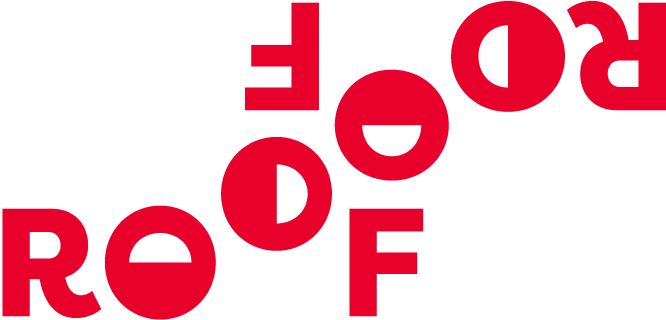
Apr 28, 2023 | Industry News, Marketing
When it comes to your business, having a solid and reliable roof over your head is crucial. It protects your building from the elements and ensures the safety of everything and everyone inside. However, roofing can be a bit tricky, especially because it involves a lot of different materials and techniques. Let’s dive into the world of business roofing to help you understand how it all works.
Types of Business Roofing
There are several key types of roofing used in the business world. Here are a few:
- Flat Roofs: These are very common in commercial buildings. They are easier to install over large areas and can be more cost-effective. However, they need good drainage to prevent water from pooling and causing damage.
- Metal Roofs: Known for their durability, metal roofs can last up to 50 years or more. They’re resistant to extreme weather conditions and can also help in reducing energy costs by reflecting sunlight.
- Shingle Roofs: While more common in residential buildings, some businesses choose shingle roofs for their aesthetic appeal. They come in many materials, including asphalt, wood, and slate.
- Built-Up Roofing (BUR): This type is made with several layers of bitumen and reinforcing fabrics. It’s a thick, durable option for flat roofs.
- Green Roofs: These roofs are covered with plants, which can reduce heating and cooling costs, manage water runoff, and provide a pleasant aesthetic. However, they need additional structural support to handle the extra weight.
Important Factors to Consider
When choosing the right roof for your business, you should think about a few important things:
- Weather: Your local climate plays a huge role in determining the best type of roof. For example, areas with heavy snowfall need roofs that can bear the weight of the snow.
- Energy Efficiency: Some roofing materials and colors can reflect sunlight, helping to keep your building cooler and reduce your air conditioning costs during the warmer months.
- Maintenance: Different roofs require different levels of maintenance. It’s important to know how often your roof will need care and what kind of costs are involved.
- Cost: The initial cost of a roof can vary widely depending on the material and the size of your building. Remember to also consider the long-term costs of maintenance and potential energy savings.
Getting the Right Help
Picking the right roof and making sure it’s properly installed can be a big task. It’s a good idea to get help from professionals who specialize in commercial roofing. They can give you personalized advice based on your building’s specifications and your local climate. Also, a good roofing contractor will offer warranties for their work, giving you peace of mind.
Remember, your business’s roof is a big investment. Taking the time to understand your options and make informed decisions will help ensure that you get the best value and protection for your business. Whether you’re installing a new roof or maintaining an existing one, knowing the basics of business roofing can go a long way.

Apr 27, 2023 | Industry News, Sales
Understanding Customer Acquisition Cost
Customer Acquisition Cost (CAC) is a crucial metric for any business, particularly in the marketing and financial domains. It measures the total cost of acquiring a new customer, considering marketing and sales efforts. Accurately calculating CAC helps companies evaluate the efficiency of their investment strategies and can signal whether adjustments are necessary for future marketing campaigns or sales tactics.
Steps to Calculate Customer Acquisition Cost
Step 1: Determine the Time Period
The first step in calculating CAC is to define the time period over which the costs and new customers will be measured. This could be a quarter, a year, or any period relevant to your business goals and reporting practices.
Step 2: Aggregate Relevant Costs
Gather all expenses directly related to acquiring new customers during the chosen time period. This includes:
- Marketing Expenses: Costs associated with advertising, marketing staff, content production, paid media, and promotional events.
- Sales Expenses: Salaries of sales personnel, commissions, and costs of sales support materials and activities.
- Software/Subscriptions: Any tools or software used primarily for marketing and sales automation.
- Overheads: Allocate a portion of overhead that directly supports marketing and sales activities. This can include utilities or rent for spaces dedicated to these departments.
Step 3: Count New Customers Acquired
Count the total number of new customers acquired during the same period that the costs were recorded. Ensure accuracy in tracking to include only those customers who truly are new to the business.
Step 4: Perform the Calculation
Use the formula:
CAC = Total Acquisition Costs / Total New Customers Acquired
Divide the total acquisition costs by the total number of new customers acquired to find the CAC. For example, if your total costs are $100,000 and you acquired 500 new customers, your CAC is $200 per new customer.
Examples of CAC Calculation
Example 1: A small business spends $10,000 on marketing and sales. They acquire 50 new customers. Their CAC is thus $10,000 / 50 = $200 per customer.
Example 2: A larger company spends $500,000 on comprehensive marketing campaigns and its sales team. They acquire 1,000 new customers. Thus, their CAC calculates as $500 per customer ($500,000 / 1,000).
Understanding CAC in Different Contexts
CAC can significantly vary depending on the industry, the scalability of operations, and the target market segments. It’s imperative for businesses to benchmark their CAC against industry standards to gauge performance. Lower CAC often reflects efficient marketing and sales operations, whereas a higher CAC suggests that strategies might need refinement for better return on investment.
Optimizing Customer Acquisition Cost
After calculating the CAC, businesses should explore strategies to optimize their marketing and sales processes. This may include investing in more effective marketing channels, refining the sales process, or implementing more sophisticated customer tracking and engagement tools. By continuously monitoring and striving to improve CAC, companies can increase their profitability and ensure sustainable growth.
In conclusion, calculating Customer Acquisition Cost is an essential practice for businesses to manage and optimize their investment in acquiring new customers. It not only helps in assessing the effectiveness of marketing and sales efforts but also assists in financial planning and strategy development.


